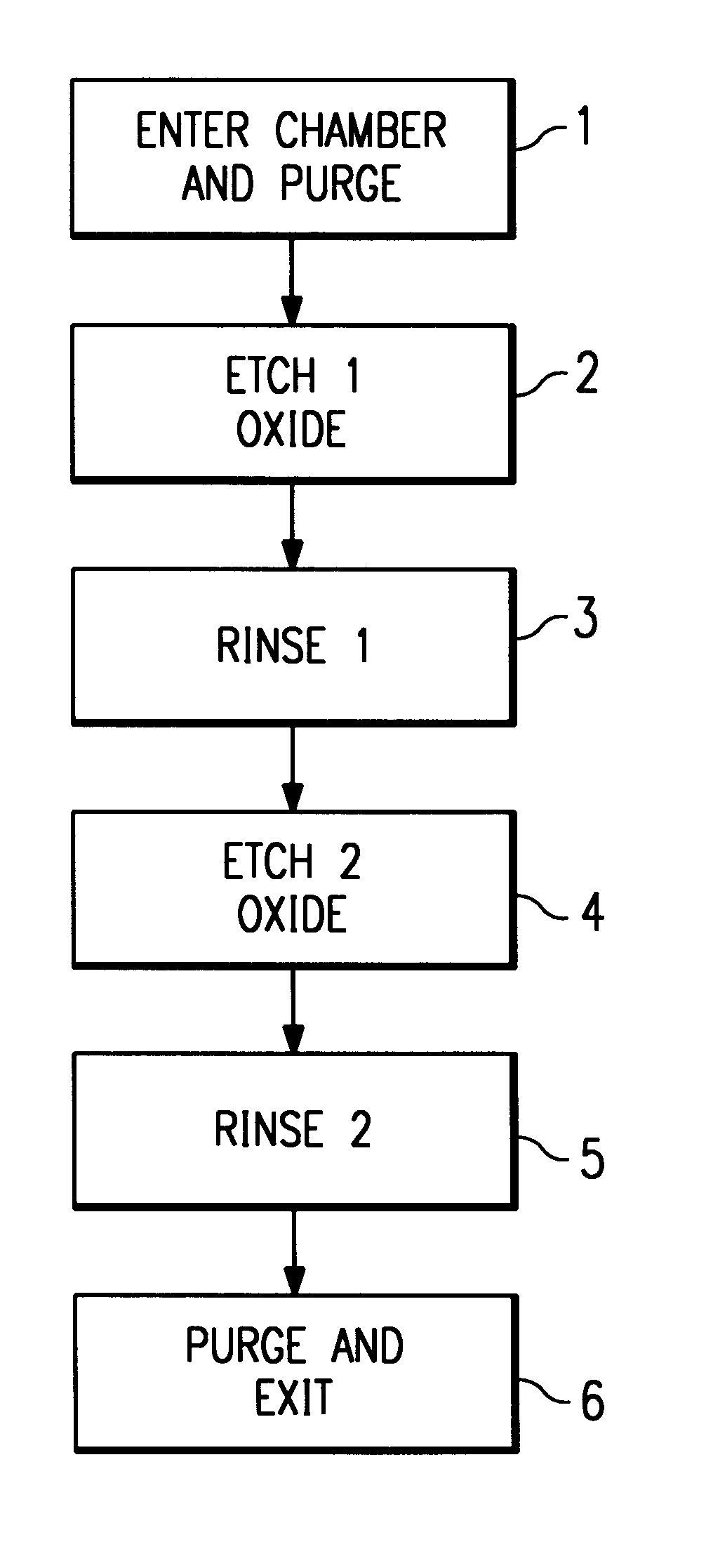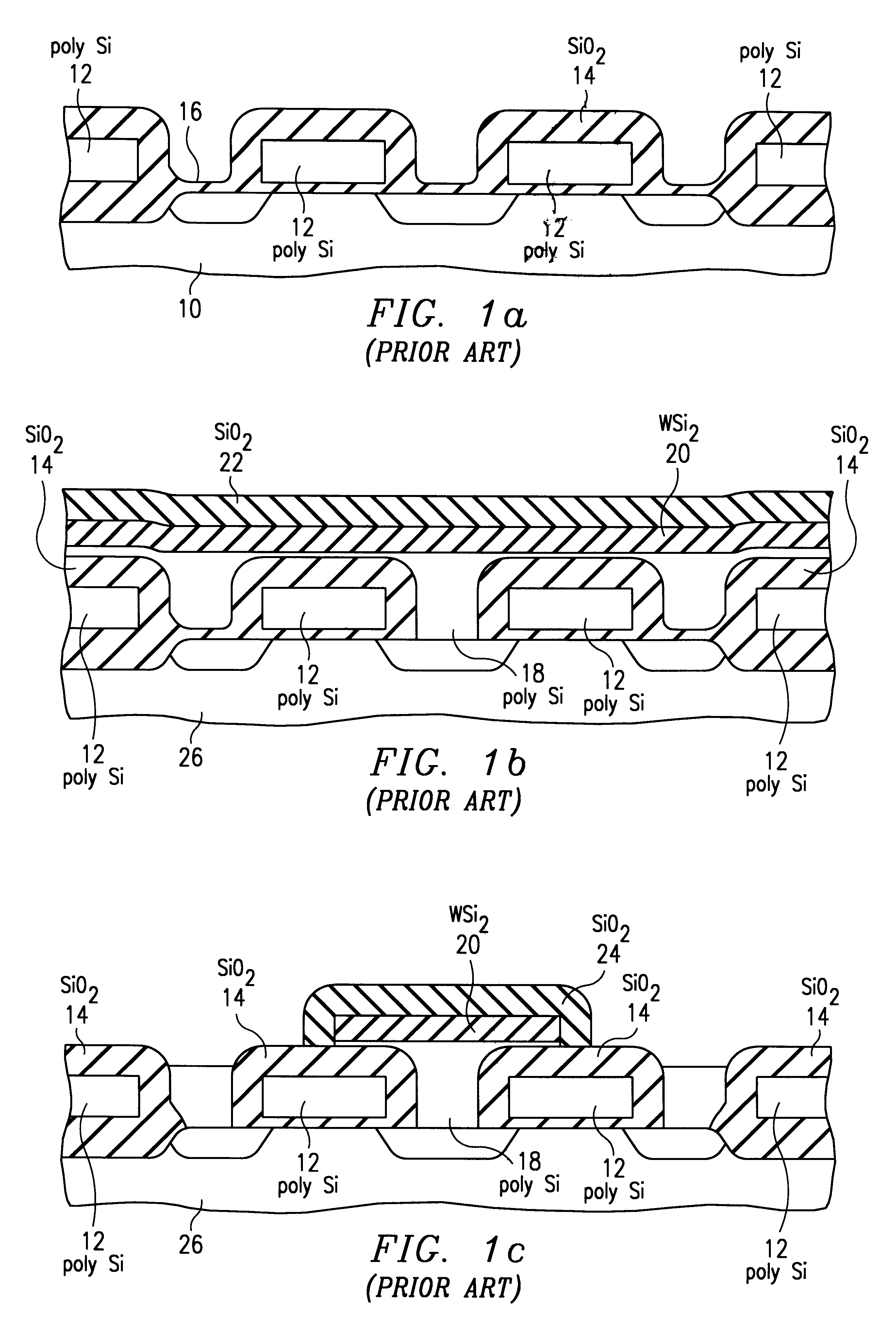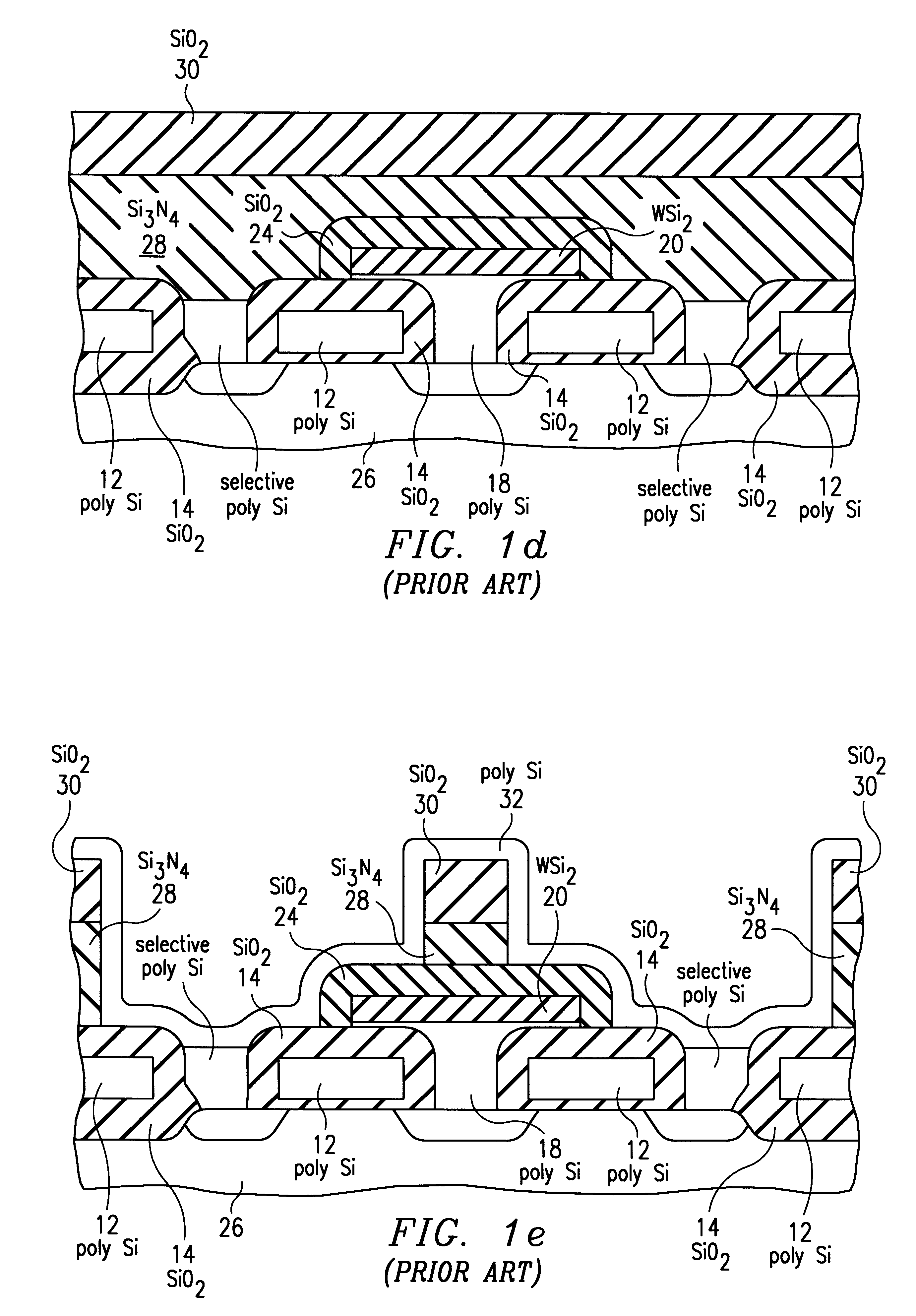Two step oxide removal for memory cells
a memory cell and oxide removal technology, applied in the direction of electrical equipment, semiconductor devices, capacitors, etc., can solve the problems of large linewidth devices, large particle sizes, and particle generation, and achieve the effect of minimizing defective memory cells and reducing particles
- Summary
- Abstract
- Description
- Claims
- Application Information
AI Technical Summary
Benefits of technology
Problems solved by technology
Method used
Image
Examples
Embodiment Construction
FIG. 2 depicts, in flow chart form, a two step oxide cleaning process according to the preferred embodiment of the invention. Relating FIG. 2 to prior art FIGS. 1a-1f, the inventive two step oxide cleaning process would be used to remove the oxide layer 30 during the steps shown between FIGS. 1e and 1f during crown cell formation. Of course, crown type memory cells may be made by other processes, some of which are described in the aforementioned U.S. patents. Regardless of the specific process used to manufacture the crown memory cell, each process will implement an oxide strip and thus the inventive two step oxide cleaning process is suitable for all crown memory cell processes. Additionally, the inventive two step oxide strip is not limited to crown memory cells and is applicable to other types of memory cells and to semiconductor processing in general as oxides are widely used.
In the following description, it is to be noted that the ratios between nitrogen, water vapor and HF hav...
PUM
 Login to View More
Login to View More Abstract
Description
Claims
Application Information
 Login to View More
Login to View More - R&D
- Intellectual Property
- Life Sciences
- Materials
- Tech Scout
- Unparalleled Data Quality
- Higher Quality Content
- 60% Fewer Hallucinations
Browse by: Latest US Patents, China's latest patents, Technical Efficacy Thesaurus, Application Domain, Technology Topic, Popular Technical Reports.
© 2025 PatSnap. All rights reserved.Legal|Privacy policy|Modern Slavery Act Transparency Statement|Sitemap|About US| Contact US: help@patsnap.com



